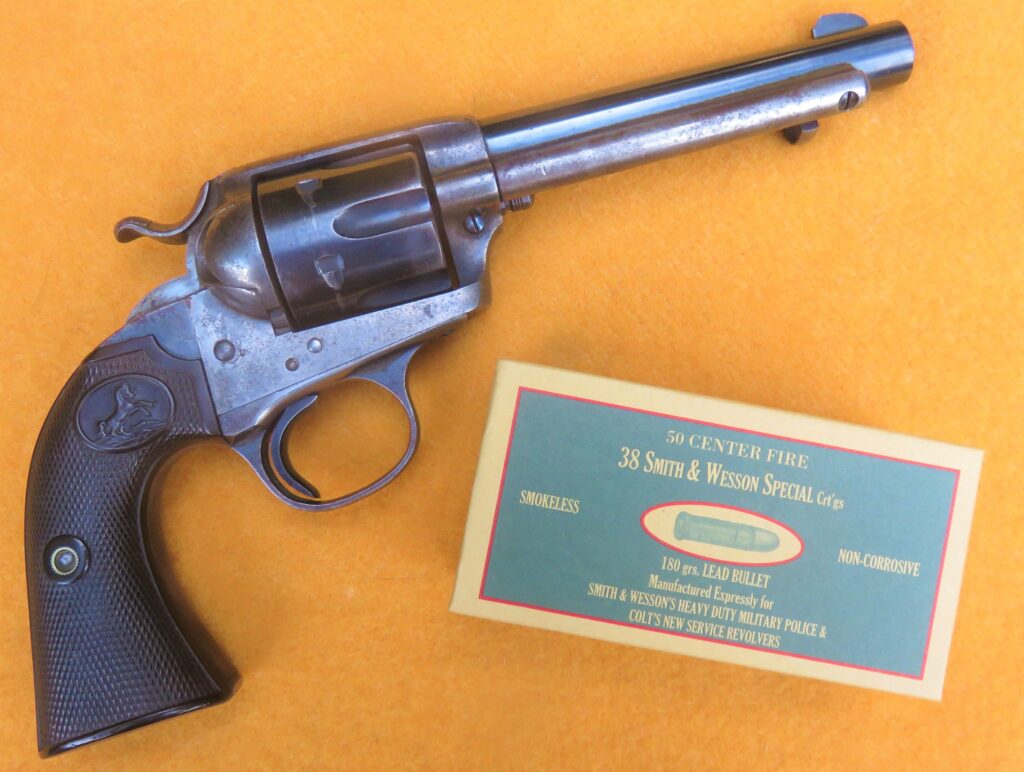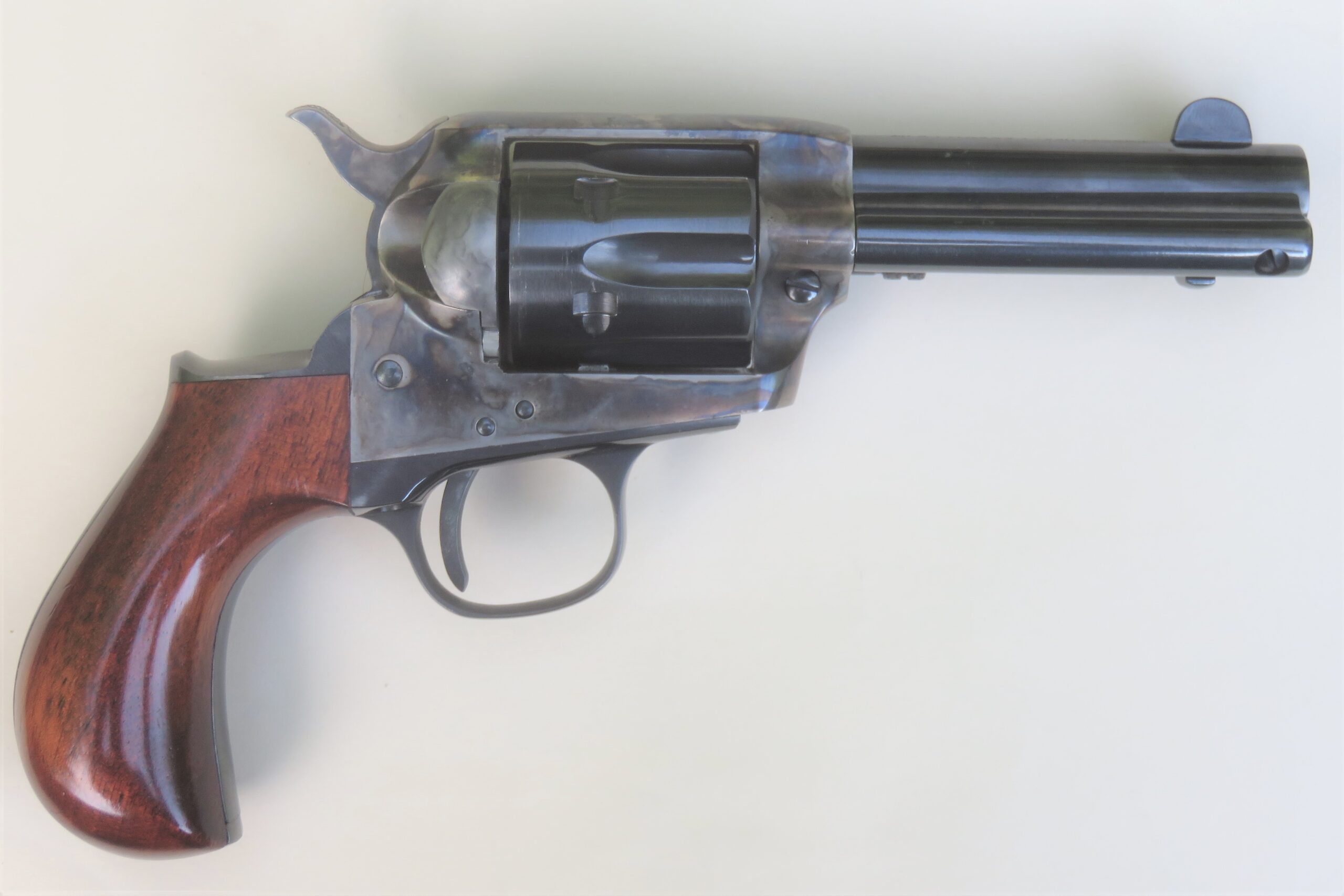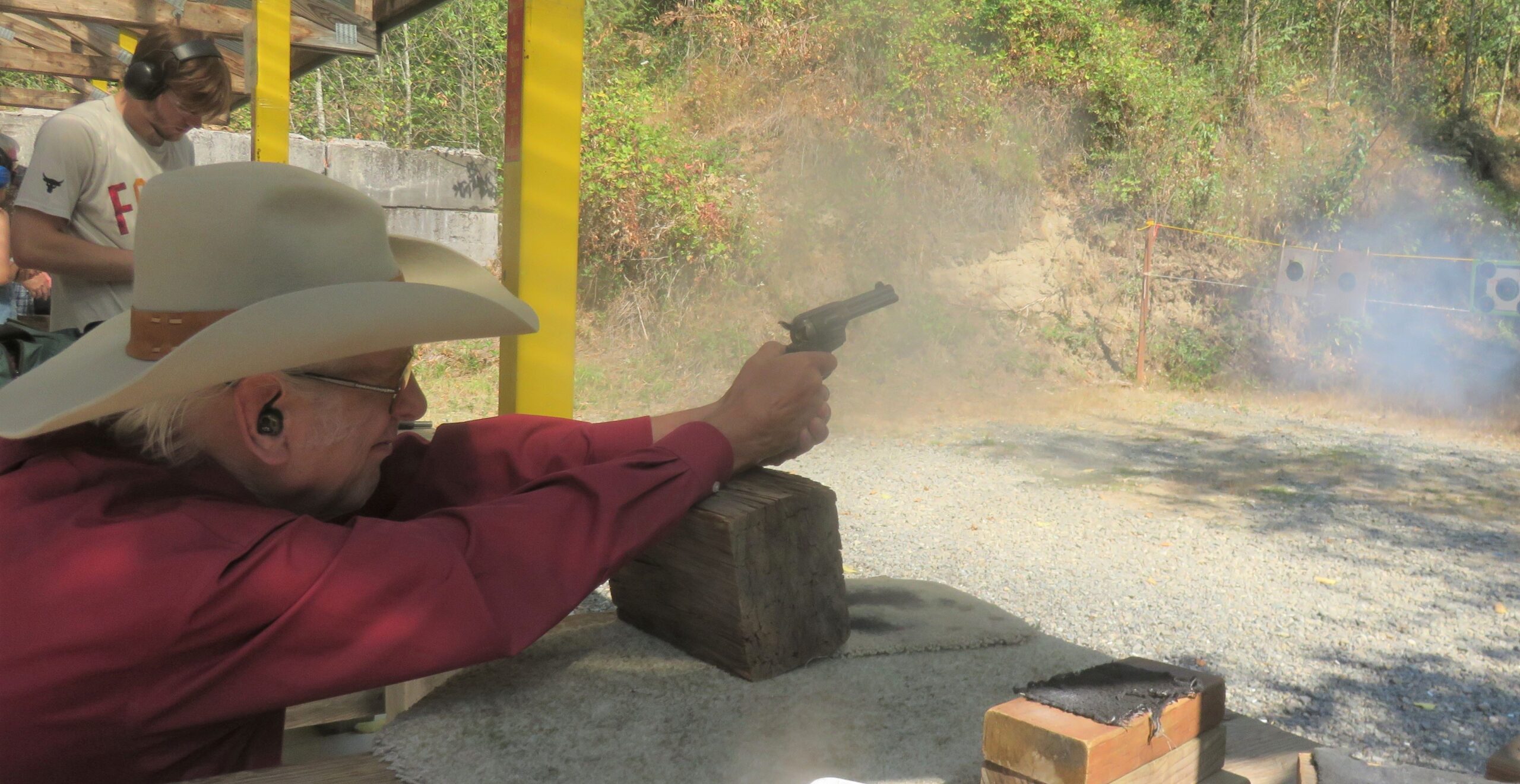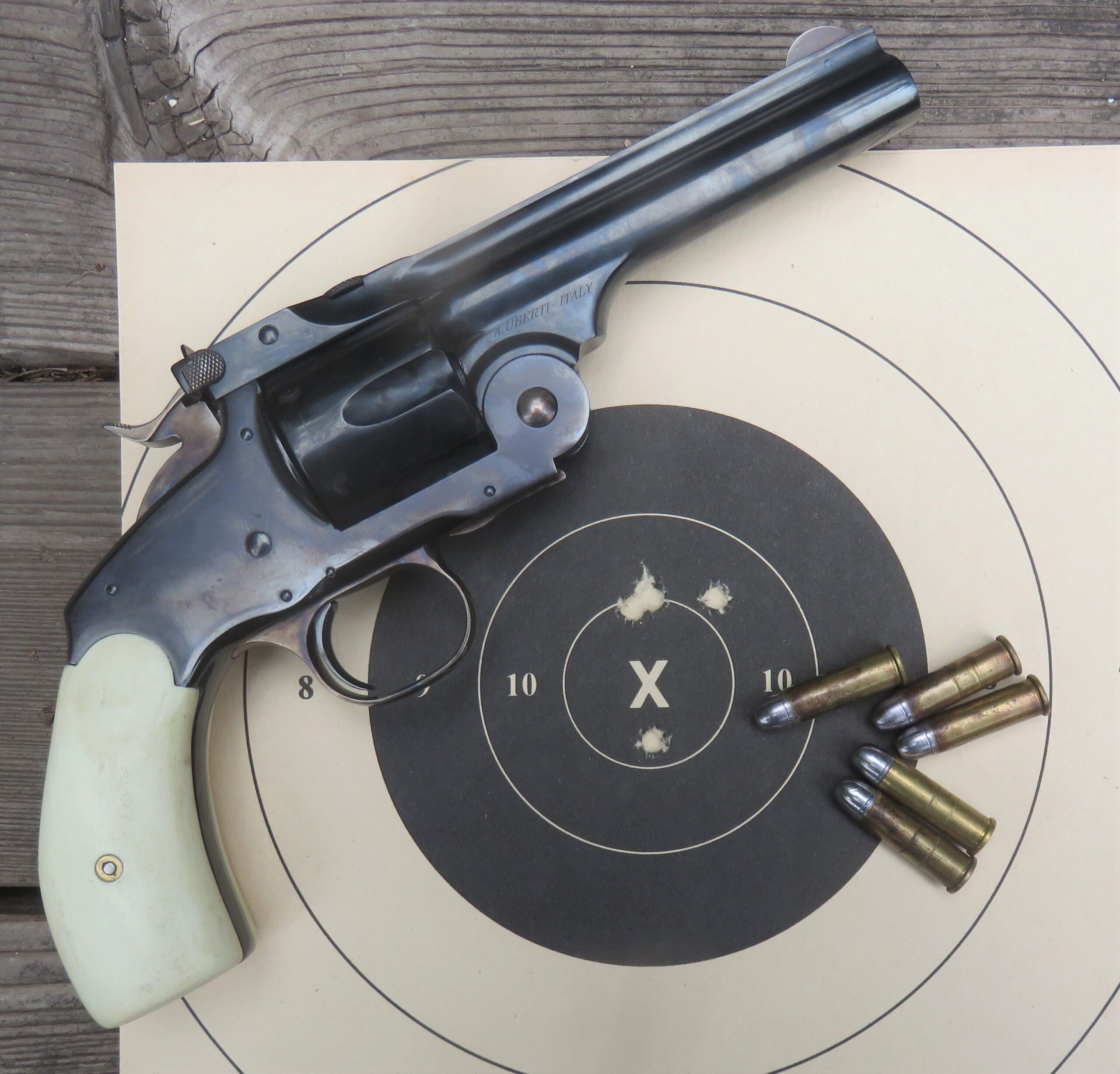
By Mike Nesbitt | Contributing editor
In order to make our views of loading black powder in the .38 Special complete, we’re going to make this a two-part story.
The reason for that is mainly because there are two very different types of guns which are chambered for the .38 Special cartridge. First, there are the revolvers “made for” the .38 Special. Second, there are the conversions where a .38 Special cylinder is added to a .36 Navy revolver, which makes it a .38 Special but with a barrel having a .375” groove diameter, a bit larger than the standard .358-inch. Those conversion revolvers really deserve their own story and they do add another chapter to the book of the .38 Special.
When I was growing up, which could take us back to the late 1940s and, of course, through the ’50s, the .38 Special was our most popular revolver cartridge. It very well likely still is even though more handgun shooters and enforcement officers are leaning towards automatics these days. And, with all of that popularity, it is sometimes forgotten that the .38 Special was originally a black powder cartridge, introduced in 1903, and loaded with 21 grains of black powder under the 158-grain lead bullet.
That was the first loading and what we call the standard loading today, with the same 158-grain lead bullet, is simply a smokeless powdered version of that black powder load, with the same or very similar velocity. And while the .38 Special is recognized as a very versatile cartridge, with several different loadings, from mid-range wadcutter target loads to the ear-ringing Plus-P high velocity loads, for this review we’ll be discussing only the black powder loads, with the 158-grain bullets.
We could throw in some discussion of the .38 Special with the 200-grain bullets. Those were introduced in order to give the .38 a little more stopping power by giving it a load which was on par with the old .41 Long Colt. Somewhere in my hoard of trash, I have an old Lyman mold for the 200-grain bullets, which I used to favor but with smokeless loads. Actually, I’ll have to do a little research to see if the 200-grain bullets were ever factory loaded with black powder. Without doing that research, I don’t think they were…
And while the .38 Special is commonly credited to Smith & Wesson, there was, and basically still is, a .38 Colt Special cartridge. There is no difference in the cartridge cases and to make the cartridge look more “Colt,” the ammunition was simply loaded with a 158-grain flat nosed bullet. But that was enough to make a difference and with those bullets the cartridge boxes were labelled as “.38 Colt Special.” Being somewhat of a Colt man, that appealed to me several years ago and I do enjoy loading my ammo with the Lyman copy of the old .38 Colt Special bullet, #358416.

According to Sharpe’s Complete Guide To Handloading (1937), the original loading for the .38 Special used 20.6 grains of FFFg under the 158-grain lead bullets. I don’t know if that was determined after pulling a bullet on a factory load or just how. Most references give the old factory load as 21.0 grains of black powder.
One thing I will mention before getting to loads and shooting; if you’re going to use black powder in a cartridge revolver, do yourself a big favor and lubricate the parts of the revolver first. This especially means the base pin which the cylinder rotates around. Be sure that it is greased as well as can be. On the old Colt style percussion revolvers, both old and new, the base pin has threads around it to hold that grease. While the Colt Single Action doesn’t have those grease-holding threads, they still need to be greased. I like to use October Country’s “Bumblin’ Bear Grease” but use what you might have. Without that grease the gun can become inoperable after just ten rounds with black powder loads. (Don’t ask me how I know…)

The .38 Special revolvers that I have to use all have a Western flair. They begin with my old Colt Bisley which I’ve had since I was a teenager. That gun was re-built by Colt, I believe, in the 1930s because it has an 1898 frame, which pre-dates the .38 Special, but the barrel is marked ‘(Bisley Model)’ along with “Colt Single Action Army, .38 Special.” That Bisley used to be my regular carry revolver and I have done a lot of shooting with it but none lately…
More recently, the .38 I like to use is a Beretta copy of the Smith & Wesson New Model #3. Beretta introduced this as their Laramie Model revolver which was made in both .38 Special and .45 Colt. Mine is the .38 Special with the 5-inch barrel. This gun has target sights and a very crisp action. Why the Laramie Models were discontinued I don’t know, as they are a delight but must not have sold well enough to make another run.
The newest .38 Special I have is one of the “Lightnings” that Cimarron had made by Uberti. Rather than a double action like the Colt revolver of 1877, this gun has a frame about the same size, roughly a 7/8s size of the Colt Peacemaker. Mine is the .38 with the 3½-inch barrel, a very handy little piece, and a lot of fun to shoot.
Here’s a tip if you have or want to get one of the “Lightnings.” To remove the cylinder, pull the base pin forward while pushing the ejector rod back at the same time. The reason for this is because the base pin is long enough that it will stop against the “half-moon” for your fingertip at the end of the ejector rod before clearing the frame. While you push the ejector rod back, that “halfmoon” moves away from the barrel, making room for the base pin to go between the “halfmoon” and the barrel, which makes removal of the base pin rather easy.

That is mentioned because while using black powder loads, the cylinder certainly must be removed for cleaning and for greasing the base pin prior to doing more shooting.
The first black powder loading I tried in the .38 Special used just 16 grains of Olde Eynsford 2F powder under the Colt-style 158-grain flat nosed bullets. Those worked rather well but at the same time they felt like they could use something more. The 16-grain loads were tried in the Lightning revolver, and they were quite comfortable. In addition to that, they didn’t group too badly but, like I said, they just didn’t have the spark I was looking for.
So, a little tweaking of the load began. The next try used the same bullets, lubricated with BPC lube from C. Sharps Arms, but over 17 ½ grains of the same powder. Those were tried in the Laramie Model and to be very specific about it, Wow!! The group seen in the picture holds five shots, all fired from the bench at just 10 yards with the Laramie Model’s sights held firmly on the X in the target. I thought about shooting another five shots, to make that a 10-shot group, but too many times I’ve just ruined the 5-shot group so more shooting will have to wait.
While I might try more powder, perhaps 18 or 18½ grains of the same Olde Eynsford 2F, I’m very pleased with how this 17½-grain loading performs. And, still in the future, some loads using 3F powder, either Olde Eynsford or Swiss, should be tried. Those possible changes, which simply fall into the category of “more tweaking,” are simply things that can be tried along with shooting a few rounds over the chronograph just to see how they’re really doing.
But the shooting I expect to do sooner, perhaps at my very next chance, is to use the .38 Special with the 17½-grain loading on the trail-walk, shooting at hanging gongs and silhouettes. That could be just for fun or in the competitive black powder matches we hold monthly. Often our black powder cartridge matches include an after-aggregate match where revolvers with black powder loads are used. This Laramie Model, with its target sights, should prove to be a front-runner in those friendly matches.
I’ve known about the history of the .38 Special for years, certainly. But I never actually gave it a good try with black powder before, even though I have watched others using black powder and completely enjoying it. Maybe I was too wrapped up with the .44 Russian and the .44-40 to give the smaller .38 a real good chance. That has changed now and I’ll be doing several more things with the .38 Special.
Along those same lines, if you’ve never tried black powder in your .38 Special, give it a chance. Just be sure to use a bullet lubricant that is formulated for black powder shooting and grease your revolver as I have recommended. With those things done, black powder loads in the .38 Special will perform with the best of them.




